Digital Camera World Verdict
Super wide, super sharp and light as the proverbial feather, the Canon RF 14-35mm f/4L IS USM is possibly the best full-frame lens for travel and architecture photography. What's more, not only is it more affordable than its faster sibling (the Canon RF 15-35mm f/2.8L IS USM) it's also a touch wider, offering premium performance in a compact and capable package.
Pros
- +
Incredible image stabilizer
- +
Close focusing distance
- +
Wide 14mm field of view
Cons
- -
Feels a little plasticky
- -
Still a pricey proposition
Why you can trust Digital Camera World
No, the Canon RF 14-35mm f/4L IS USM isn’t a budget version of the trinity lens. Yes this model is quite a bit cheaper than the f/2.8 optic, but it represents a different experience altogether.
At these ultra-wide focal lengths, a single millimetre can make a big difference to the field of view – so much so that the choice of the Canon RF 14-35mm f/4L IS USM over the Canon RF 15-35mm f/2.8L IS USM can make the difference between getting the shot and missing it.
For this reason there is enough difference between the lenses that photographers are likely to choose which to opt for based on their technical requirements, not just their financial ones.
While the trinity lenses (including the Canon RF 24-70mm f/2.8L IS USM and Canon RF 70-200mm f/2.8L IS USM) get a lot of attention, Canon’s f/4 siblings are exceptional options. They are significantly smaller than the f/2.8 range, which makes them perfect for traveling, with the palatable price tag being a welcome bonus.
So just how good is one of Canon's latest additions to its ever expanding EOS R system, and does it have what it takes to rank among the best Canon RF lenses?
Canon RF 14-35mm f/4L IS USM: Specifications
Mount: Canon RF
Weather sealed: Yes
Stabilization: 5.5 stops (up to 7 stops with stabilized body)
Elements/construction: 16 elements in 12 groups
Angle of view: 114° – 63°
Max aperture: f/4
Min aperture: f/22
Min focus distance: 0.20m
Filter size: 77mm
Length: 99.8mm
Diameter: 84.1mm
Weight: 540g
Canon RF 14-35mm f/4L IS USM: Build and handling
Today's pro mirrorless lenses are a bit of a contradiction. In many respects they are the pinnacle of high-end optical design, often outperforming their DLSR equivalents, but one area in which the manufacturers seem undecided is the build and handling experience. Top-flight lenses used to have a truly solid feel, being crafted largely from metal, and almost always focused and zoomed internally.
With Canon's L-series RF glass, however (and Nikon's S-branded pro Z-mount models), the focus has been far more on keeping weight down. While this is certainly appealing in some respects, it has meant dispensing with the all-metal build and substituting this with high-impact plastic. This doesn't affect the structural performance of the lenses, necessarily, but does strip away some of that confidence that your high-priced lens is built like a tank.
The Canon RF 14-35mm f/4L suffers from this, too, but we can't really lodge it as a criticism, since it is the trend for almost all new mirrorless lenses. Furthermore this model has a distinct advantage: being an f/4 lens, rather than f/2.8, the weight savings are even more pronounced. It's comparatively light as a feather!
When you consider the focal length, stabilization and all the other features built into the lens, it's really impressive that Canon has been able to keep the weight and dimensions down to this degree. The lens is ideal for travel – armed with this and a superzoom, like the brilliant Canon RF 24-240mm f/4-6.3 IS USM, you can shoot almost anything with a nearly empty kitbag.
The lens does extend when zoomed (the barrel is at its shortest length around the 22mm mark), but it’s minimal and the zoom control is smooth. It’s also perfectly balanced on the Canon EOS R and Canon EOS R5. And like all L-series lenses, this is of course weather-sealed.
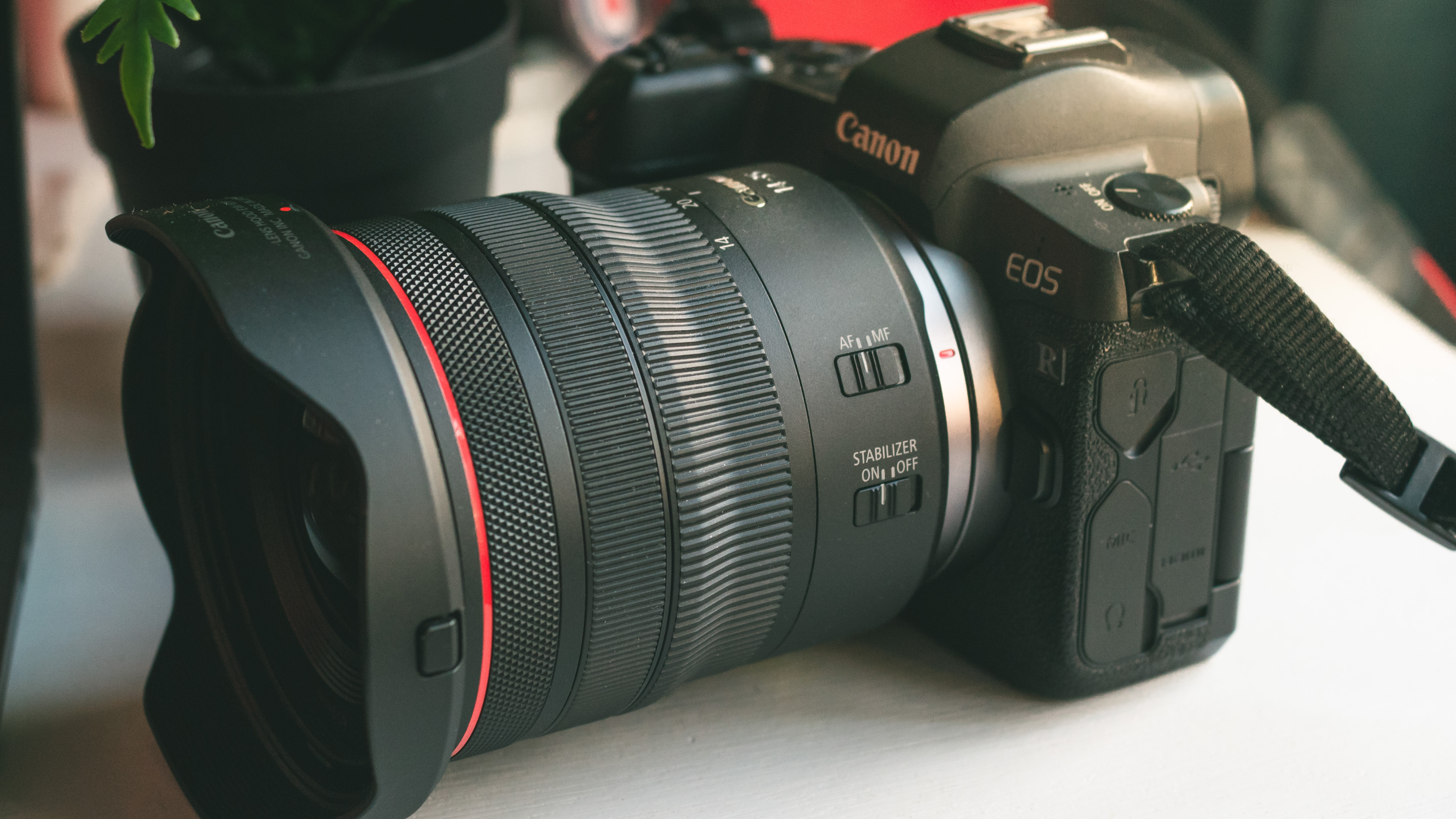
Canon RF 14-35mm f/4L IS USM: Performance
This is an L-series lens, featuring the coveted red ring around the barrel, so users will expect great things from the internal elements. Luckily you won't be disappointed. The optics are beautifully sharp at virtually all aperture settings. Interestingly we noticed hardly any real world difference between f/4 and f/8, with only a slight resolution drop-off as the diaphragm is closed down to f/16 and above, thanks to diffraction. As always, for this reason we'd avoid the smallest apertures unless necessary.
Contrast is high, but in the true-to-life style you'd expect from a premium lens. Colors are not impacted and images remain natural in their appearance, and performance is well maintained towards the edges, too. Zooming in on the corners reveals a slight stretching, associated with the wide field of view, and there is a noticeable softness compared to the centre, but you have to pixel-peep to really see it. In terms of detail, the RF 14-35mm f/4L is more than a match for the latest breed of ultra-high resolution R-series cameras.
As for geometric attributes, as with almost all high-end mirrorless lenses these days, things get a little complicated. Without the automatic lens corrections turned on edge vignetting is excessive, as is barrel distortion. Once the corrections are applied, however, this almost all goes away and you're left with a balanced, evenly illuminated frame. Clearly the 14-35mm follows the trend of reliance on digital correction, rather than predominantly optical strategies, to keep weight and cost managed. If we overlook this, though, what you get from the lens are relatively straight lines and low chromatic aberration and vignetting, straight out of camera.
AF, meanwhile, is lightning-fast and near-silent. When focusing from near objects to a point in the far distance, there is negligible lag, thanks to the Ultrasonic Motor. Focusing is all internal, so the front element doesn't rotate. Speaking of close focusing, it is a big standout feature; the minimum working distance is 20cm, which is very impressive for a lens of this type. It enables you to fill the frame with foregrounds in landscape scenes, and creates a unique perspective when shooting details at events. While f/4 won't get you the bokeh experienced with the f/2.8 version, at these distances it is possible to push the background out of focus.
Another reason to shout about this lens is the image stabilization. It offers 5.5 stops of compensation on non-IBIS bodies, rising to 7 stops when paired with a stabilized cameras Canon EOS R3, Canon EOS R6 and R5. It is highly effective at reducing camera shake and, combined with the wide focal length, it was possible for us to handhold at shutter speeds in excess of 1 whole second.
At around 1/10sec even magnified images exhibited no blur, enabling the ISO to be kept below 6400. By 1.3secs the center remained mostly sharp, but the edges of the frame showed some signs of rotational movement. We love the fact that Canon has chosen to include IS in such an ultra-wide lens. By several metrics there is no competition in this category.
Canon RF 14-35mm f/4L IS USM: Lab results
We run a range of lab tests under controlled conditions, using the Imatest Master testing suite. Photos of test charts are taken across the range of apertures and zooms (where available), then analyzed for sharpness, distortion and chromatic aberrations.
We use Imatest SFR (spatial frequency response) charts and analysis software to plot lens resolution at the center of the image frame, corners and mid-point distances, across the range of aperture settings and, with zoom lenses, at four different focal lengths. The tests also measure distortion and color fringing (chromatic aberration).
Sharpness:
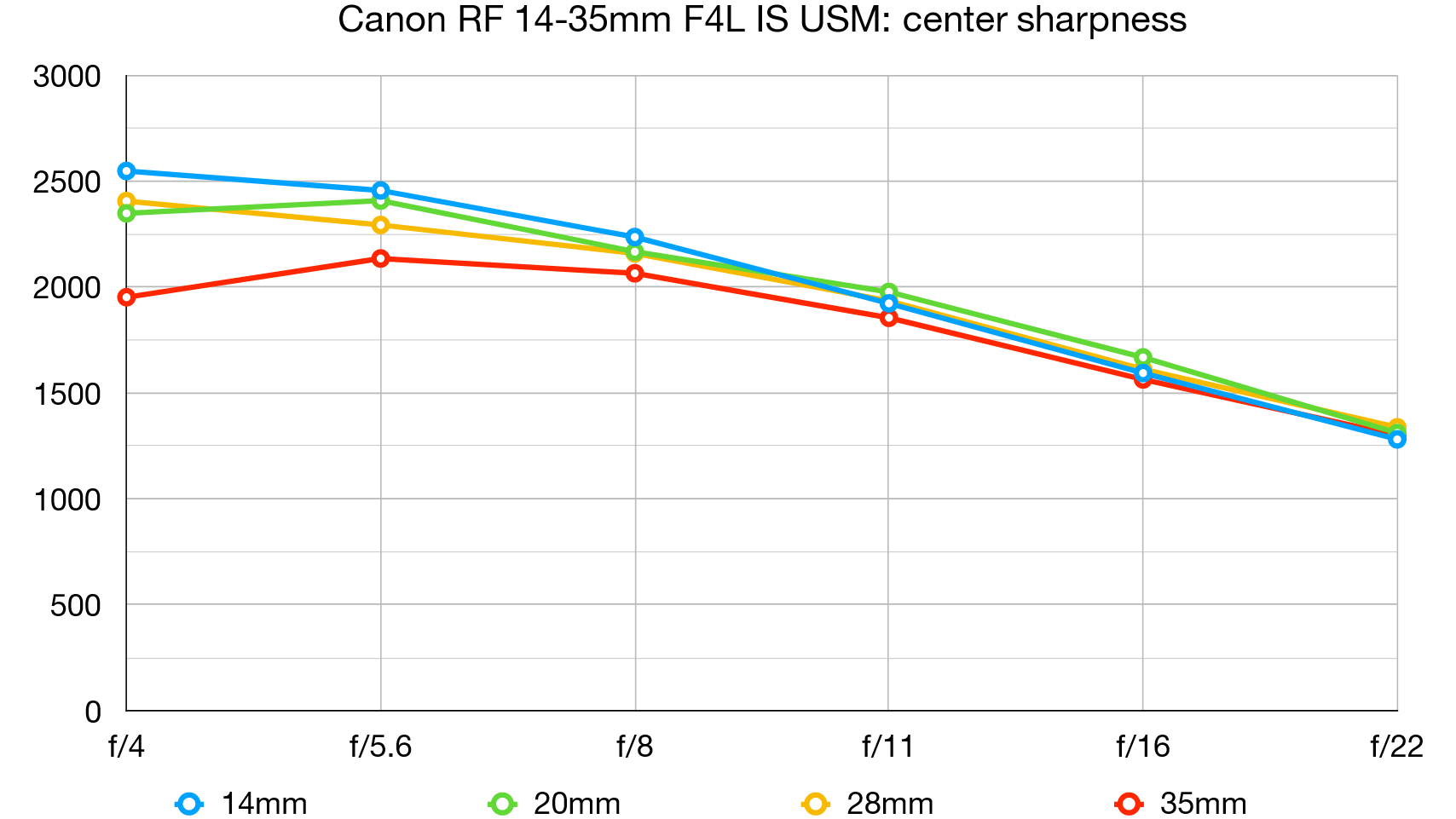
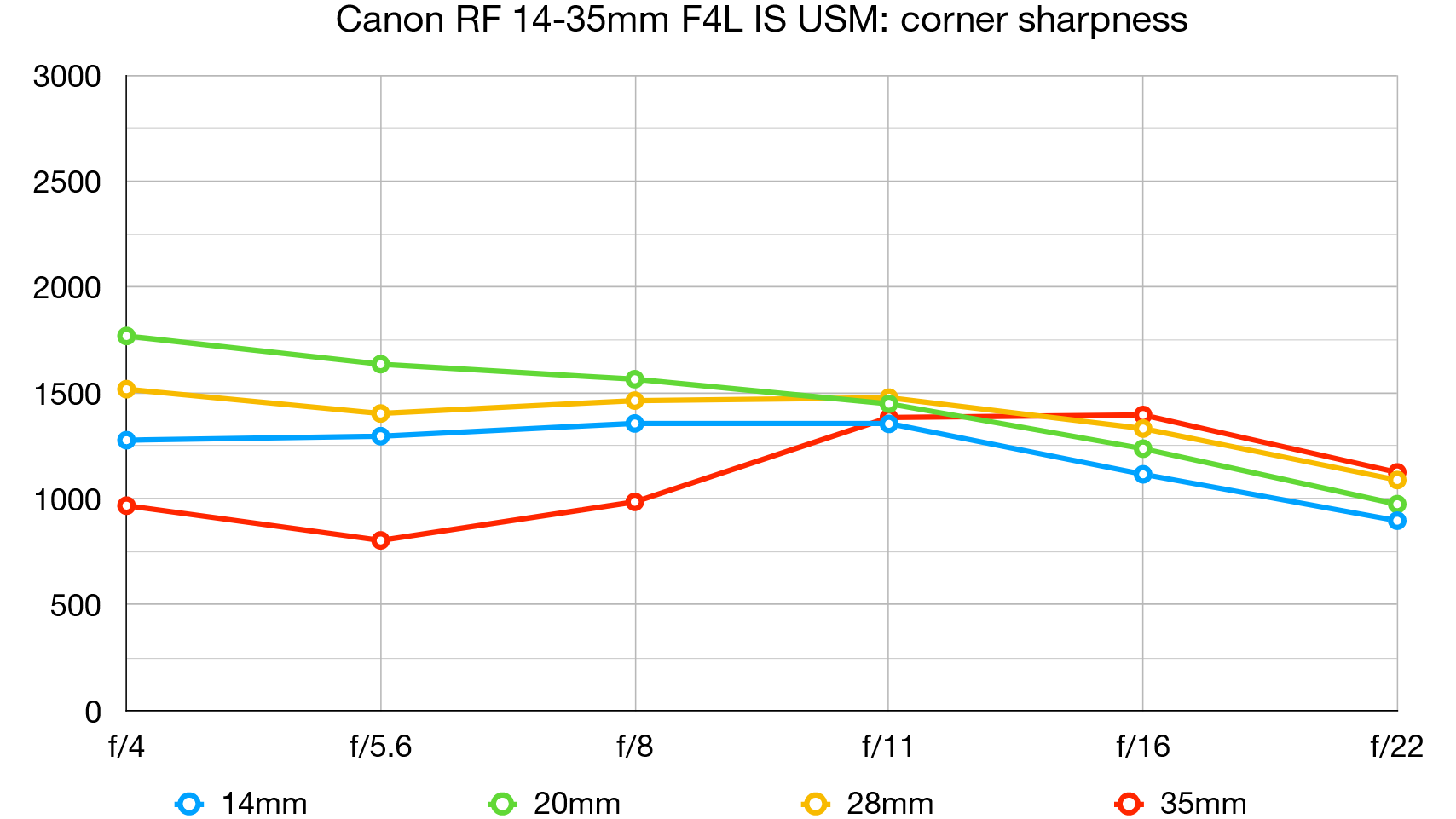
Levels of center-sharpness are excellent at all focal lengths, even when using the widest aperture of f/4. Corner sharpness is inevitably lower, as ultra-wide lenses always struggle to maintain high corner sharpness when shooting our large test chart at such close range. But despite this, the 14-35mm performs fairly well, with images only being soft in the corners when shooting at 35mm at large apertures.
Fringing:
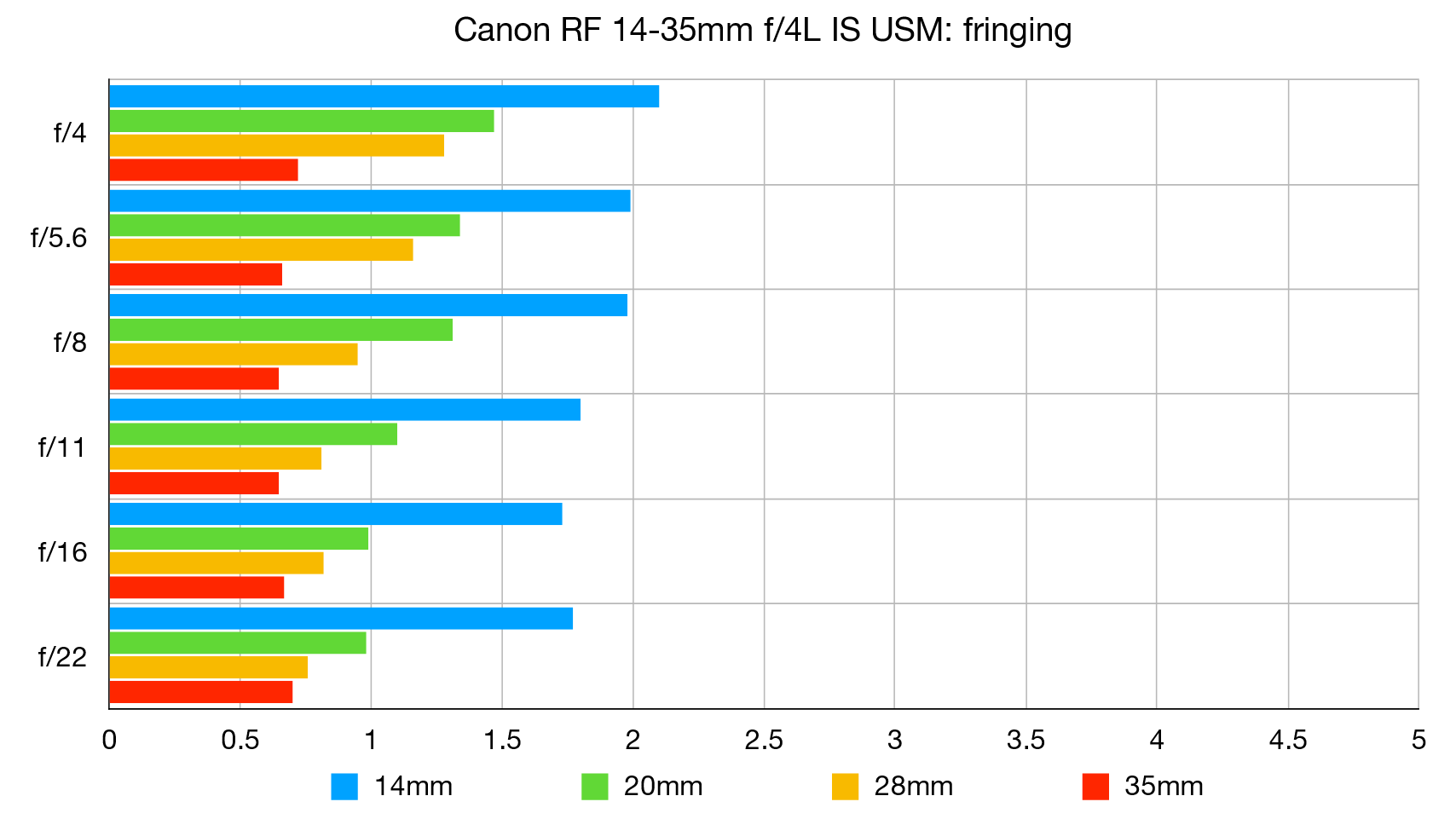
Fringing is apparent at the shortest end of the zoom range, although not severe. Zoom in to 20mm and aberrations are reduced significantly, and they stay at acceptable levels through the rest of the focal range.
Distortion:
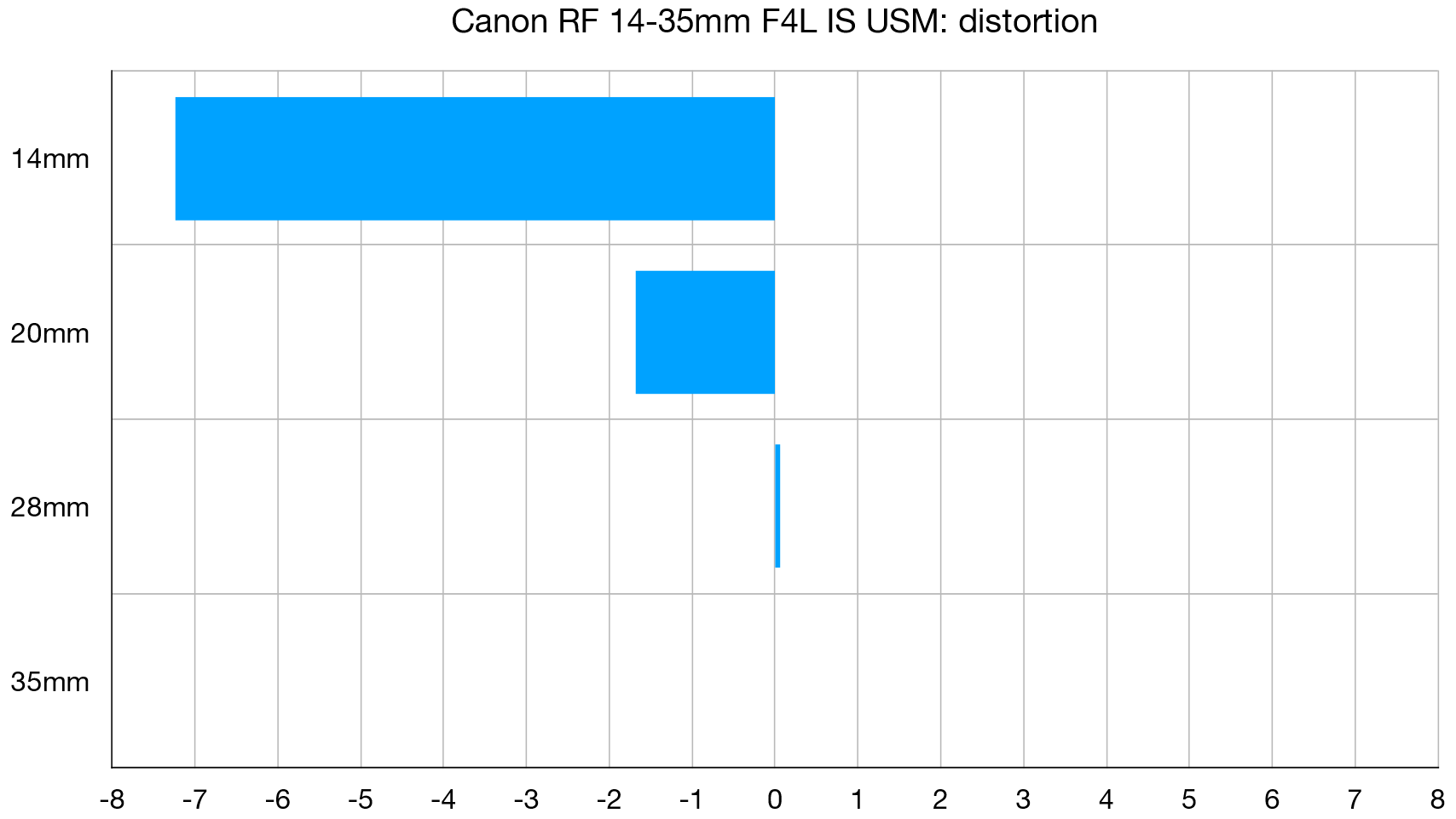
Without in-camera distortion correction enabled, the true degree of the 14-35mm's optical distortion is revealed. There's pronounced barrel distortion at 14mm, but this does reduce quickly: even by 20mm it's not that noticeable, and the lens is completely distortion-free at 28mm and beyond.
Canon RF 14-35mm f/4L IS USM: Verdict
With the Canon RF 14-35mm f/4L IS USM, the manufacturer has essentially created a new category of lens. Yes there are comparable optics, namely the Nikkor Z 14-30mm f/4 S, but no other model quite matches the potential stabilization benefits and focal range.
Image quality is superb, portability is hugely welcome and the close focusing ability is a big bonus. It's not the cheapest lens around but, compared to the RF 15-35mm f/2.8L trinity version, there is a significant cost saving. For a balance of quality, size and feature spec, this winning optic represents great value.
Canon RF 14-35mm f/4L IS USM: Sample images

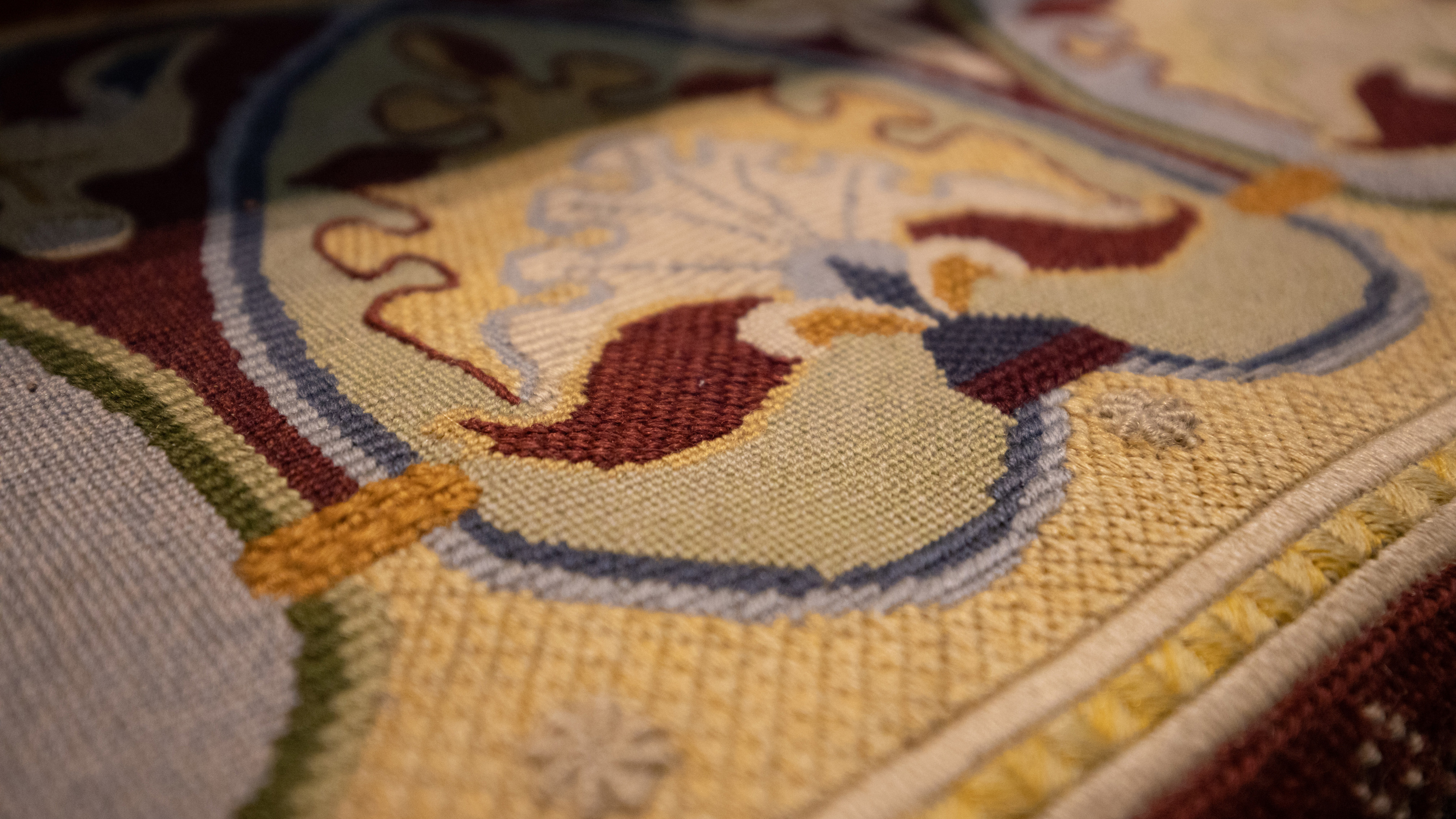


Read more:
Canon RF 15-35mm f/2.8L IS USM review
The best Canon camera
Best Canon lenses
As the Editor for Digital Photographer magazine, Peter is a specialist in camera tutorials and creative projects to help you get the most out of your camera, lens, tripod, filters, gimbal, lighting and other imaging equipment.
After cutting his teeth working in retail for camera specialists like Jessops, he has spent 11 years as a photography journalist and freelance writer – and he is a Getty Images-registered photographer, to boot.
No matter what you want to shoot, Peter can help you sharpen your skills and elevate your ability, whether it’s taking portraits, capturing landscapes, shooting architecture, creating macro and still life, photographing action… he can help you learn and improve.



